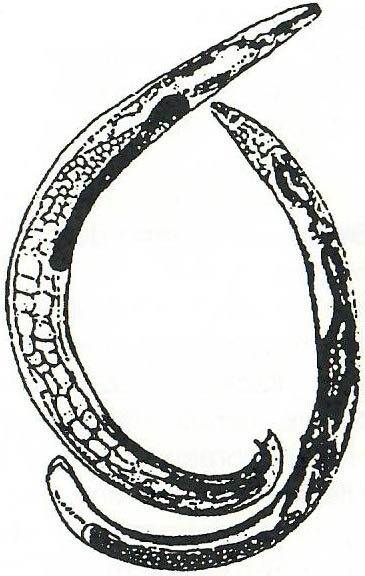
Beneficial Nematoties
Black Fly Problem?
Small black Fungus Gnats flying in front of your computer screen? Those annoying little pests! We can solve you problem with parasitic nematodes.
Beneficial Nematodes: Yes, good nematodes really do exist! These minuscule beneficials are barely visible to the naked eye as time threads. They attack only insects in moist soils or borer tunnels. Plants, earthworms, and vertebrates are completely unaffected by these tiny beasts. The major requirements for successful use are an environment that does not dry out, and appropriate application rates.
Beneficial nematodes can be supplied in a spray concentrate or a moist granular carrier. Please consult us with your particular needs.

When we think of adding a colorful accent to our indoor office plants we often think about cut flowers or a flowering potted plant. Actually there is another option. Tropical foliage plants that have beautiful colored leaves. If your office has the right conditions, bright light and warm temperature, there is an unlimited selection of plants that have colorful foliage and variegated leaves. Crotons, Cordyline, Rex begonias, Stromanthe are just a few that can brighten your office with some color. We use many of these on locations in the Boston metro area. Colored leafy botanicals have unlimited plant possibilities.
Brian Guilfoyle contact 781.632.4475
OWNER
www.pdiplants.com



